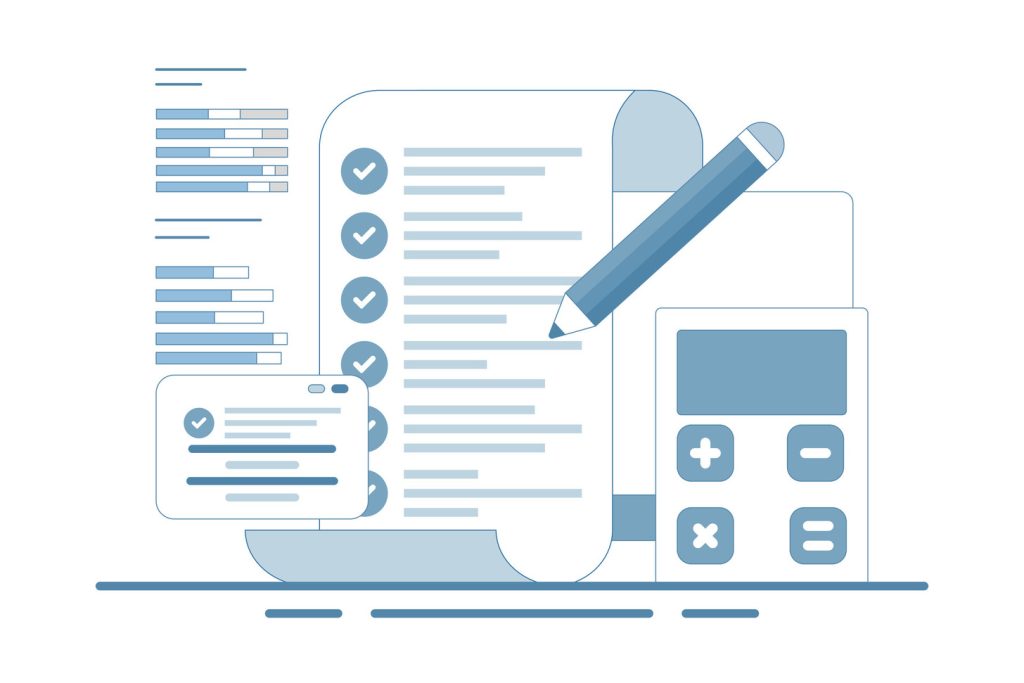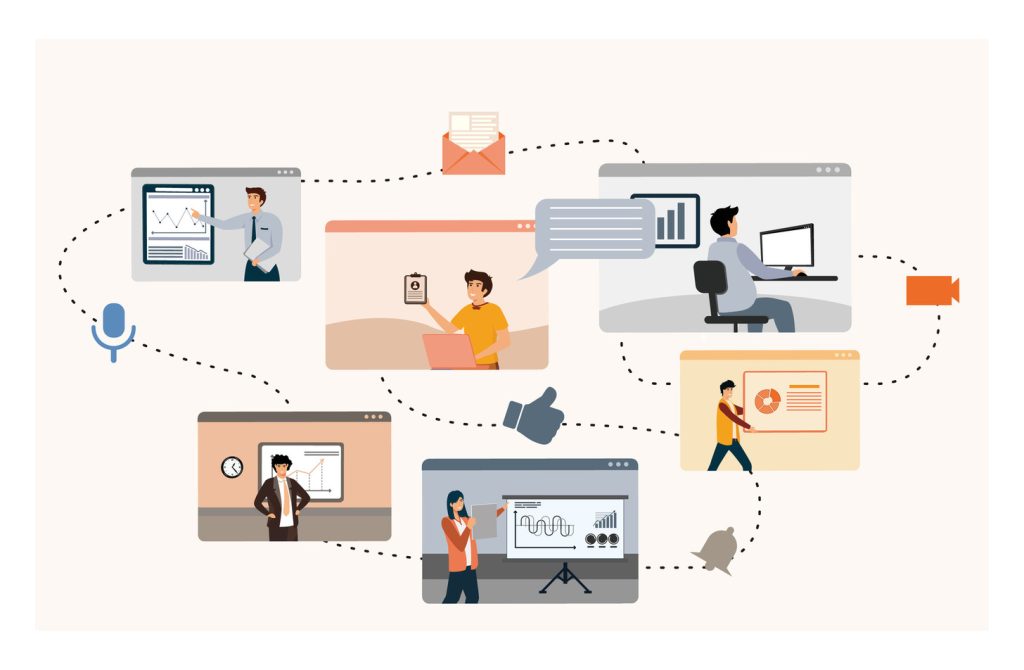Contract Management: The Ultimate Guide for Businesses

Every legally binding agreement a company signs holds the potential to drive growth or create costly setbacks. Inefficient handling of these documents can lead to annual revenue losses of up to 9.2%, according to industry research. For organizations aiming to thrive, mastering the end-to-end oversight of agreements isn’t optional—it’s a strategic necessity.
This process spans seven critical stages, from drafting terms to renewing partnerships. When executed poorly, gaps in compliance, missed deadlines, and unclear obligations expose businesses to financial and legal risks. Conversely, a structured approach transforms agreements into tools for operational clarity and revenue protection.
Modern enterprises increasingly rely on automation to replace outdated manual workflows. Digital solutions reduce administrative burdens while ensuring consistency across departments. They also align agreements with broader organizational objectives, turning static documents into dynamic assets.
Companies that prioritize systematic oversight gain measurable advantages. As well as, these include faster decision-making, stronger vendor partnerships, and improved compliance outcomes. The shift from paper-based chaos to streamlined digital systems isn’t just about efficiency—it’s about building a foundation for scalable success.
Key Takeaways
- Poorly structured processes can drain up to 9.2% of annual revenue.
- End-to-end oversight minimizes risk and ensures compliance.
- Automation reduces manual work and enhances consistency.
- Strategic alignment turns agreements into growth drivers.
- Digital solutions accelerate workflows and strengthen partnerships.

The Importance of Contract Management for Modern Businesses
Hidden financial drains lurk in outdated approaches to handling business agreements. WCC research reveals companies lose 8.6% of annual spending through contract-related cost leakage—a preventable gap that could fund innovation or expansion. Legal teams spend over 50% of their workday navigating agreement complexities, diverting resources from strategic priorities.
Fueling Growth Through Precision
Streamlined processes accelerate revenue cycles by 30-45%, according to industry benchmarks. Automated workflows reduce approval bottlenecks, ensuring faster deal closures and predictable cash flow. Organizations with mature oversight systems recover 2-3% of lost revenue annually through better terms enforcement and renewal tracking.
Building Compliance Firewalls
Unmonitored agreements create regulatory landmines. Businesses without centralized oversight face 67% higher non-compliance penalties. A structured approach identifies high-risk clauses early, preventing violations before they escalate. One Fortune 500 company reduced compliance incidents by 82% after implementing AI-driven monitoring tools.
Emerging technologies like GenAI now automate 70% of routine agreement tasks for procurement teams. Alternatively, these tools analyze thousands of documents in minutes, flagging inconsistencies and suggesting optimizations. Forward-thinking enterprises leverage such innovations to transform agreements from administrative burdens into strategic assets.
Understanding the Contract Lifecycle: From Inception to Closeout
Organizations optimize outcomes by treating every business arrangement as a living process. Besides, the agreement lifecycle spans seven interconnected phases, each requiring precise coordination between teams. Structured oversight during these stages prevents revenue leakage while aligning obligations with organizational goals.
Early Stages: Planning and Negotiation
Initial phases determine long-term success. Stakeholder identification and requirement mapping create alignment before drafting begins. Clear terms reduce rework during negotiations—companies using standardized templates cut revision cycles by 40%.
Effective negotiation balances risk and flexibility. Automated clause libraries help teams maintain consistency across agreements while adapting to partner needs. This approach reduces approval delays and strengthens relationships through transparent communication.
Execution, Monitoring, and Renewal
Digital signing platforms accelerate execution, with 78% of businesses reporting faster turnaround times. Post-signature tracking ensures obligations are met through automated alerts and milestone dashboards. One logistics firm reduced compliance incidents by 62% using real-time performance monitoring.
Renewal analysis prevents auto-renewal traps. Systems flag expiring agreements 90-120 days in advance, giving teams time to assess value and renegotiate terms. Proactive organizations recover 3-5% of annual revenue through optimized renewal strategies.

| Lifecycle Stage | Manual Approach | Automated Solution |
|---|---|---|
| Negotiation | 4.7 weeks average | 2.1 weeks average |
| Obligation Tracking | 35% missed deadlines | 92% on-time compliance |
| Renewal Prep | 21% identified late | 100% 90-day alerts |
Closeout procedures complete the cycle securely. Centralized archives with metadata tagging allow instant retrieval during audits. Proper documentation cuts legal discovery costs by up to $23,000 per case.
Key Stages and Best Practices in Contract Creation and Negotiation
Crafting effective agreements requires meticulous attention to detail from the first draft. Clear terms and obligations form the foundation of successful partnerships. Teams using standardized templates reduce revision cycles by 40%, accelerating timelines while maintaining compliance.
Strategic negotiation balances risk and value across all parties. Organizations adopting collaborative approaches see 28% fewer disputes compared to adversarial tactics. Structured approval workflows with defined roles cut approval delays by 30%, ensuring faster deal closures.
Ambiguous language during creation stages costs businesses an average of $145,000 annually in avoidable litigation. Legal review processes act as safety nets, identifying non-compliance risks before signatures. One healthcare provider avoided $2.7M in penalties through rigorous pre-execution audits.
Best practices for efficient agreement development include:
- Pre-approved clause libraries ensuring consistency across departments
- Automated version control eliminating conflicting terms
- Real-time collaboration tools reducing email chains by 65%
Forward-thinking companies integrate AI tools that analyze historical data during negotiations. Again, these systems suggest optimal terms based on past outcomes, creating mutually beneficial conditions. When paired with centralized tracking dashboards, teams maintain visibility across all active discussions.
Successful outcomes hinge on aligning creation stages with organizational priorities. Regular training programs keep stakeholders updated on evolving regulations and negotiation tactics. This proactive approach transforms agreements from static documents into dynamic business tools.
Utilizing Contract Management Software for Seamless Workflows
Modern enterprises are adopting intelligent systems to transform how they handle agreements. Most importantly, these tools eliminate manual bottlenecks through structured automation, creating cohesive processes from creation to renewal. Organizations using dedicated platforms report 73% fewer compliance gaps and 41% faster approval cycles compared to manual methods.
Centralized Repositories and Automated Alerts
Digital storage solutions end document chaos by housing all agreements in one secure location. Teams access real-time updates through advanced search filters and AI-generated summaries. Automated alerts flag expiring terms 90 days in advance, giving stakeholders time to renegotiate or terminate partnerships strategically.
One manufacturing firm reduced missed deadlines by 88% after implementing tracking workflows. “Additionally, the system now handles deadline monitoring, freeing our team to focus on strategic partnerships,” their legal director noted. Role-based permissions ensure sensitive data remains protected while maintaining transparency.
Integration with ERP and CRM Systems
Leading platforms sync seamlessly with financial and customer relationship tools. This integration eliminates duplicate data entry and ensures payment terms align with accounting records. Sales teams gain visibility into renewal opportunities directly within CRM dashboards.
| Process | Manual Approach | Automated Solution |
|---|---|---|
| Approvals | 6.2 days average | 1.8 days average |
| Data Entry | 47% error rate | 3% error rate |
| Audit Prep | 21 hours monthly | 2 hours monthly |
Real-time reporting features track performance metrics across departments. Finance teams monitor payment schedules while procurement analyzes vendor compliance—all through a unified interface. This interconnected approach turns static documents into dynamic business accelerators.
Digitizing the Contract Lifecycle with Advanced Digital Tools
Paper-based systems crumble under the weight of modern business demands. Enterprises now deploy intelligent platforms to transform rigid processes into agile workflows. Lastly, these solutions slash approval times by 84% while reducing errors through automated validations.
The Role of Cloud-Based Platforms
Secure electronic signature tools have become non-negotiable for distributed teams. Platforms like DocuSign and Adobe Sign authenticate identities through biometric checks and audit trails. One financial services firm cut signing delays from 19 days to 6 hours using encrypted e-signature workflows.
Cloud systems break geographical barriers. Marketing teams in New York collaborate with legal teams in Tokyo on the same document simultaneously. Version control features prevent conflicting edits, while role-based access maintains security protocols.
“Moving to a cloud platform let us reduce agreement cycle times by 73% while maintaining SOC 2 compliance.”
Modern tools integrate with existing ERP and CRM systems through APIs. This connectivity ensures payment terms sync with accounting software and renewal dates populate sales dashboards automatically.
| Feature | Manual Process | Digital Solution |
|---|---|---|
| Collaboration | Email chains | Real-time editing |
| Security | Filing cabinets | 256-bit encryption |
| Scalability | Physical storage | Unlimited cloud space |
Automated repositories centralize all documents with smart search capabilities. Legal teams locate clauses 89% faster using AI-powered metadata tagging compared to manual searches.
Monitoring and Managing Compliance Through Contract Data
Real-time data transforms compliance from reactive firefighting to strategic foresight. Organizations that systematically track milestones and obligations reduce regulatory risks by 62%, according to industry analysts. Automated systems flag deadlines 90 days in advance, giving teams critical lead time to address requirements.
Centralized dashboards provide instant visibility into performance metrics. Moreover, these tools highlight deviations from agreed terms, enabling swift corrections before issues escalate. One logistics company reduced compliance incidents by 58% after implementing real-time tracking.
Regular audits create defensible records for regulatory reviews. Documenting every compliance activity builds an audit trail that withstands legal scrutiny. Early intervention protocols address gaps within 48 hours, preventing minor oversights from becoming crises.
Analyzing agreement patterns reveals hidden risks and opportunities. Teams renegotiate unfavorable terms or strengthen partnerships using historical performance data. This approach turns compliance into a competitive advantage rather than a checkbox exercise.
Systematic oversight protects against financial penalties while preserving stakeholder trust. Organizations prioritizing these strategies maintain smoother operations and stronger regulator relationships. “Data-driven compliance isn’t about avoiding fines—it’s about building resilient business practices,” notes a Fortune 500 risk executive.

Driving Efficiency with Automated Contract Processes
Traditional document handling strangles productivity through endless email chains and misplaced files. Research across 1,700 organizations reveals manual agreement execution consumes 34-54 days—enough time for competitors to outpace stagnant operations. Automated systems slash this timeline by replacing paper shuffling with precision-engineered workflows.
Smart Approval Sequences
Workflow automation eliminates human bottlenecks that delay critical decisions. Approval routing adapts to organizational hierarchies, ensuring documents reach the right stakeholders within predefined timelines. One healthcare provider reduced approval cycles from 19 days to 47 hours using conditional logic rules.
| Process Stage | Manual Time | Automated Time |
|---|---|---|
| Review Cycles | 11.4 days | 2.6 days |
| Error Detection | 68% found late | 94% flagged instantly |
| Renewal Prep | 23% missed | 100% automated alerts |
Real-time dashboards expose bottlenecks through color-coded status tracking. Legal teams intervene early when processes stall, preventing delays before they impact revenue. “We regained 17 hours weekly previously spent chasing signatures,” notes a retail executive.
Data-Driven Process Optimization
Automated reporting transforms raw metrics into actionable insights. Systems track cycle times across departments, identifying teams needing additional training or resources. Centralized analytics help organizations:
- Reduce administrative costs by 31% through resource reallocation
- Cut compliance risks using AI-powered obligation tracking
- Improve partner satisfaction with transparent timelines
Furthermore, these tools create self-correcting workflows that evolve with business needs. Companies using automated processes report 28% faster revenue recognition and 19% higher employee productivity within six months.
The Role of AI in Enhancing Contract Lifecycle Management
Intelligent systems now decode complex documents faster than human teams ever could. And, these tools analyze thousands of pages in minutes, uncovering hidden patterns and opportunities. By transforming static text into actionable insights, they redefine how organizations handle critical agreements.
Extracting Key Clauses with AI
Advanced algorithms scan documents to identify critical terms and obligations instantly. Where legal teams once spent 40 hours reviewing a single agreement, AI completes the task in under two minutes. Dashboards highlight potential risks like ambiguous termination clauses or non-standard payment terms.
| Process | Manual Approach | AI-Driven Solution |
|---|---|---|
| Clause Review | 40 hours/document | 2 minutes/document |
| Risk Identification | 68% accuracy | 94% accuracy |
| Renewal Tracking | 23% missed | 100% automated |
Natural language processing flags non-compliant language against regulatory databases. This proactive approach helps organizations avoid 83% of potential disputes before signatures occur.
Predictive Analytics for Risk Mitigation
Machine learning models analyze historical data to forecast partnership outcomes. Also, these systems predict vendor reliability scores and identify agreements likely to require renegotiation. One retail chain reduced supply chain disruptions by 57% using these insights.
Automated alerts notify teams about expiring terms 120 days in advance. Real-time dashboards track performance metrics against service-level agreements. This visibility enables faster corrective actions when obligations aren’t met.
“Our AI tools surface risks we didn’t know existed, turning legal documents into strategic assets.”
Continuous learning algorithms improve their accuracy with each analyzed document. This evolution helps organizations stay ahead of emerging regulatory changes and market shifts.
Effective Contract Management: Strategies and Best Practices
Well-structured business agreements form the backbone of operational efficiency and risk mitigation. Organizations achieve peak performance through two core strategies: template standardization and ongoing refinement of workflows.
Standardizing Templates and Clauses
Pre-approved document frameworks slash drafting time by 60% while ensuring compliance with corporate policies. Centralized clause libraries maintain consistency across departments, reducing legal review cycles by 42%. Version control features eliminate conflicting terms, creating audit-ready records for regulators.
Continuous Process Improvement
Quarterly audits of active agreements identify 78% of potential risks before they escalate. Teams using automated renewal alerts renegotiate unfavorable terms 90 days in advance, recovering 2.3% of annual revenue on average. Stakeholder feedback loops refine approval workflows, cutting processing time by 31% per cycle.
Regular analysis of performance metrics transforms static documents into strategic assets. Organizations adopting these practices report 57% faster dispute resolution and 19% higher partner satisfaction scores. The result? Agreements that evolve with business needs while protecting bottom-line results.

